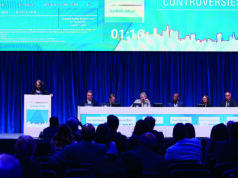According to new a study published in PLOS Medicine, a new clinical model can help predict the risk of venous thromboembolism (VTE) among patients with a leg case, enabling doctors to identify high risk cases.
Using data from three large cohorts, the researchers developed and validated two prediction models and a risk score; the L-TRIP(cast) score, in order to help doctors make decisions about when to prescribe anticoagulants for thromboprophylaxis. The study was conducted by Banne Nemeth, Leiden University Medical Center, Netherlands, and colleagues.
Nemeth and colleagues used data from the MEGA study, a population-based case-control study in the Netherlands that included 4,446 patients with VTE and 6,118 controls without, to identify biomarkers, genetic factors, and environmental factors predictive of VTE and build a full prediction model (including 32 predictors for prediction of VTE in all patients), a restricted model (including only 11 predictors selected to specifically predict VTE in plaster cast patients), and a clinical model (also targeted to plaster cast patients but including only environmental predictors that can all be determined without drawing blood or performing any laboratory assays, 14 in all).
The predictors in the clinical model were given numerical values which, when summed, produce the L-TRiP (cast) score to easily stratify patients into high or low risk for VTE. Using a cutoff of 9 points, the risk score correctly identified 80.8% of patients who developed VTE and 60.8% of patients who did not develop VTE.
The prediction models and risk score were validated in two independent cohorts, the THE-VTE study (784 VTE cases and 523 controls from the Netherlands and United Kingdom), and the Milan study (2,117 cases and 2,088 controls from Italy).
There were some limitations to this study; no information was available about which patients may have received thromboprophylaxis, and blood samples were taken three months after VTE.
Nevertheless, the authors believe these models and the L-TRiP(cast) score can help doctors, “These results can give guidance in clinical decision-making until an unambiguous guideline for thromboprophylaxis therapy in these patients is available, so that not every patient needs to be exposed to the risk and burden of anticoagulant treatment.”












